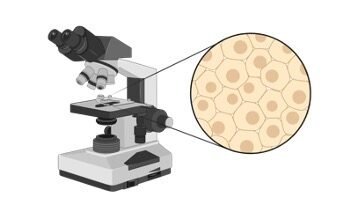Allosteric Inhibition Definition
The slowing down of enzyme-catalyzed chemical reactions is called allosteric inhibition. The proper functioning and maintenance of our bodies’ equilibrium are done by these metabolic processes and the process is regulated by allosteric inhibition.
All the important molecules are broken and built up by these metabolic processes. From the digestion of food to the repairing of our muscles, the metabolic processes are fundamental for everything.
Lock and Key: Substrate Binds to Enzyme at the Active Site
A series of chemical reactions consist of metabolic processes, which produce end products. Enzymes are the key drivers of metabolic processes. The reactions are catalyzed by these specific proteins. These enzymes reduce the amount of required energy and speed up important chemical reactions.
First, an enzyme bind to a substrate. A product is then created by this reaction. At the next metabolic step, the product serves as a subsequent substrate for a different enzyme. Finally, until a final product is created at the end, the chain of reactions occurs.
The interesting fact is that an enzyme binds to a specific substrate. Thus the enzyme can be compared to a lock and the substrate is compared with the key. A specific enzyme only binds with a specific substrate. The location, where an enzyme binds to a substrate is called the “active site”.
The wrong key will not fit the specific lock on an enzyme. The enzyme cannot catalyze a reaction if the substrate cannot fit into an active site. Even if the substrate is correct for the specific enzyme, an allosteric inhibitor can prevent the enzyme from having the correct conformation.
Allosteric Inhibition and Enzymatic Activity
Allosteric inhibition is used to control the speed of metabolic reactions. They deactivate the enzyme and thus slow down the enzymatic activity. A molecule that binds to the enzyme at an allosteric site is called an allosteric inhibitor. This site is located at a different location from the active site.
The enzyme changes its 3D shape after binding with the inhibitor. Allosteric inhibition is a form of noncompetitive inhibition. It means that at the active site, the inhibitor does not compete directly with the substrate but indirectly changes the composition of the enzyme.
The enzyme becomes inactive after changing its shape and cannot bind with its corresponding substrate. The formation of subsequent products will be slowed down by this.
The allosteric inhibitor can be compared with a locksmith. The lock (enzyme) is changed by the locksmith (allosteric inhibitor) so that the key (substrate) will no longer be able to open the lock (enzyme).
Allosteric Inhibition Prevents the Over-accumulation of Products
Allosteric inhibitors prevent the body from creating unnecessary products and wasting energy. If a metabolic pathway is compared with an assembly line at a factory, a machine alters the products at each station in the assembly line before passing it to the nest station.
Then the intermediate products are moved from station to station by the assembly line until they get the final product at the end. For example, pants are produced in this factory. At the first station, a pair of pants are cut from raw material by a machine, then the hems of the pants are stitched together by a machine at the second station.
At the third station, the zippers are attached by a machine, and finally, at the fourth station, the products (pants) are tagged and shipped in the shipment pile. The assembly line is smooth and there is no hold-up when the machines are working properly and stations will produce products at similar rates.
However, if the machine at the third station breaks down that attaches the zippers, there is now a hold-up. We must stop the first two stations of the supply to prevent products from piling up.
In this way, the supply and demand for each intermediate product are controlled and it is ensured that they are equal at each station. Similarly, the chain of reactions can be slowed down by allosteric inhibition. In this way, the over-accumulation of unnecessary products is prevented.
Examples of Allosteric inhibition
ATP in cellular respiration is an example of an allosteric inhibitor. This metabolic process is operated as a feedback loop. The speed of upstream reactions is controlled by downstream products. Phosphofructokinase is an enzyme involved in glycolysis. It converts ADP into ATP.
The ATP serves as an allosteric inhibitor when there is too much ATP in the system. The ATP slows down the conversion of ADP by binding with phosphofructokinase. Thus, ATP prevents its unnecessary production by itself because when there are already adequate amounts of ATP, it is no need to produce more ATP.
The antibiotic penicillin, which is an important drug acts as an allosteric inhibitor. Penicillin has saved millions of lives by helping the body to kill harmful bacteria. The enzyme DD-transpeptidase helps the harmful bacteria to create strong cell walls.
Penicillin binds to this enzyme and counteracts this process. Penicillin inhibits the formation of bacterial cell walls by acting as an inhibitor. The surrounding fluids of the bacterial cell can then push itself in through osmosis with a weak wall and the cell burst and die.
Allosteric Inhibition Citations
Enzyme regulation: https://www.khanacademy.org/
Allosteric inhibition of individual enzyme molecules trapped in lipid vesicles
Share












